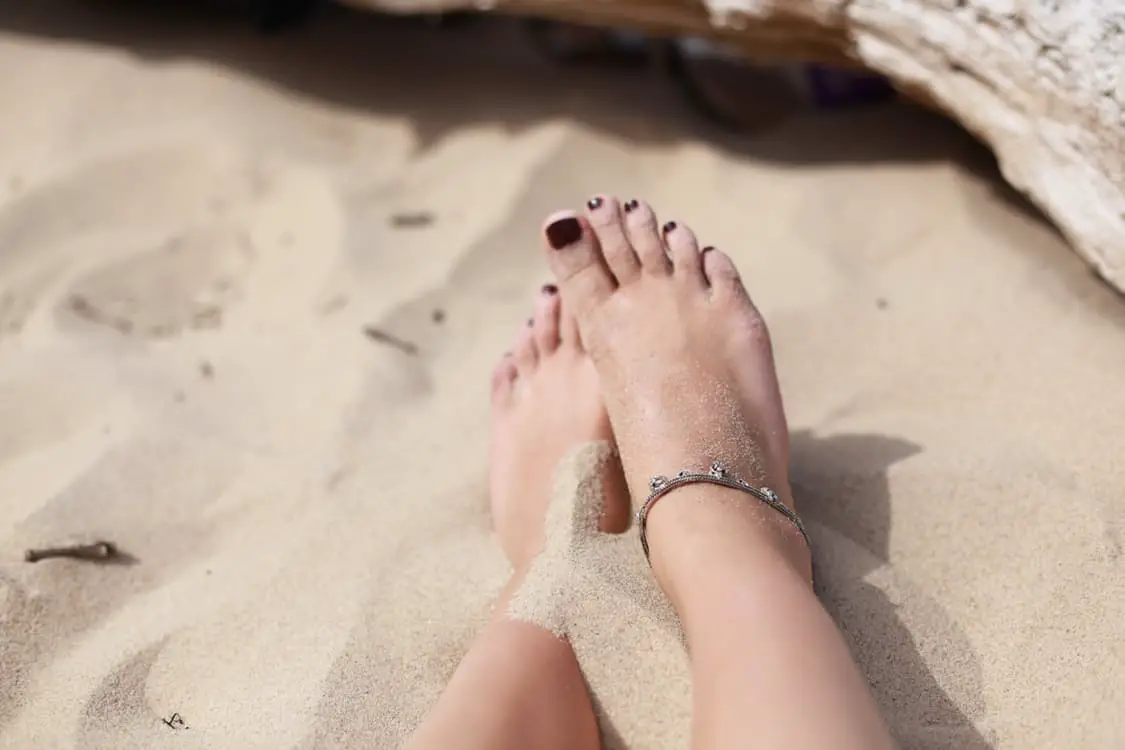When something goes wrong with our feet, many times, our first instinct is to go to the podiatrist so s/he can cure the problem of the moment.
During this interaction, many doctors are trained to view the body as a machine that needs fixing, and this process requires little or no interaction from the patient.

Human feet on white sand; image source: pexels.com
This arrangement usually works well, mostly because the doctor is also trained to look for other trouble signs that the patient may have missed.
But there is a cost, because the next time a minor injury or other incident comes along, we are not empowered to take care of it ourselves, and that is what our bodies are designed to do.
Getting Started
The parasympathetic nervous system, which is the body’s “rest and digest” or “feed and breed” mode, often holds the key for the body to heal itself. Eventually, the body can cure itself of almost any illness or injury, and that even includes serious conditions.
To jumpstart this system, people respond to various stimulations. For some, it could be a long hot bath, while for others, a cold refreshing shower does the trick. Sometimes it’s watching TV, and sometimes it’s reading a book.
All these methods require a significant time commitment, and most of us do not have a whole lot of time to spare. But, the investment is definitely worthwhile.
Some Common Injuries
Although it is not particularly serious, plantar fasciitis (policeman’s heel) is an incredibly painful condition, and many times, our first reaction is to do something to stop the pain now. Much too often, that “something” is a visit to the podiatrist.
Plantar fasciitis is basically inflammation in the heel, so with a few simple fixes, the inflammation often goes down on its own and the pain will go away.
- Ice is usually a good way to reduce inflammation anywhere on the body. Apply cold to the area for about 20 minutes at a time. If possible, elevate your feet above your heart while icing, especially during the evening hours.
- During the day, wear supportive shoes, even if they’re not the best-looking ones in your closet. Commercial insoles are often available as well.
- Stretch out the muscle with a few basic foot muscle exercises.
These treatments are much more effective if the body is in “rest and digest” mode, so it is not producing cortisol (the body’s main stress hormone). A side-effect of cortisol is that it inhibits natural healing.
Other mild injuries, such as low-grade ankle sprains, will also go away on their own in a similar way.
Some companies like Protalus have an online guide that helps you choose your perfect insole.
Non-Injury Conditions
Bunions are about as painful as they are ugly. But once again, limping to the podiatrist’s examining table may not be the best idea.
A bunion is basically just an abnormal bone growth, so if you can address the condition that made the bone grow out in the first place, the bunion will most likely go away.
- Much like plantar fasciitis, much of the problem may be ill-fitting shoes, so wear comfortable footwear that fits right even if it is not normally appropriate for that occasion. Your boss will understand why you wear athletic shoes to work.
- To facilitate the healing process, try one of these best bunion correctors. They basically act as splints.
The more rest you get, the faster your bunion will heal.
Similarly, callouses are really just dry skin. Soak your feet for fifteen or twenty minutes for two or three nights. Then, the next time you soak, use a pumice stone or foot file to gently rub away the callous. If your body is fully primed for natural healing, this process nearly always works.
Hopefully, you’ll take this advice to heart and let the healing begin.
Revision 19.3.2020 – dead link removed.









































